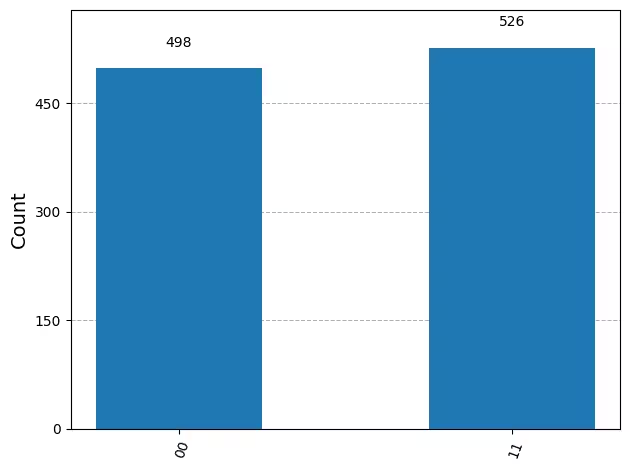Quick start
Build your first quantum circuit in under two minutes, on your local environment - no sign-in or API key necessary.
- It is recommended to use a Python virtual environment.
Click to expand for more information about Python.
- To install Python, first check the "Programming Language" section on the Qiskit PyPI project page to determine which Python versions are supported by the most recent release. For download instructions, see the Python Beginners Guide.
Click to expand for more information on virtual environments.
Click to expand for more information on virtual environments.
- Use Python virtual environments to separate Qiskit from other applications. A Python virtual environment is an isolated space to work with Python for a specific purpose — so you can install whatever packages you wish, and set up libraries, dependencies, and so on, without affecting the "base" Python environment on your machine.
One important advantage of a virtual environment is that if your Python environment becomes corrupted somewhere along the way, you can easily delete the virtual environment and start over!
Choose a preferred location in which to store information about your virtual environments. Typically they're stored in a directory named .venv within each project directory you're working in.
To work in your virtual environment, navigate to your project directory and create a minimal environment with only Python installed in it.
python3 -m venv .venvpython3 -m venv .venvpython -m venv .venvNext, activate your new environment.
source .venv/bin/activatesource .venv/bin/activateIf using PowerShell:
.venv\Scripts\Activate.ps1If using Git Bash:
source .venv/scripts/activateIf using command prompt:
.venv\Scripts\activate1. Install Qiskit
Run the following command in your terminal to install the Qiskit and Qiskit Aer (local simulation) packages, as well as the Qiskit visualization module.
pip install qiskit qiskit-aer qiskit[visualization]
# On a zsh terminal, use this line instead:
# pip install qiskit qiskit-aer 'qiskit[visualization]'2. Build your circuit
Open a Python environment, then run this code, which builds a Bell state (two entangled qubits).
from qiskit import QuantumCircuit
from qiskit.transpiler import generate_preset_pass_manager
from qiskit_aer import AerSimulator
qc = QuantumCircuit(2)
qc.h(0)
qc.cx(0, 1)
qc.measure_all()
sim = AerSimulator()
pass_manager = generate_preset_pass_manager()
transpiled = pass_manager.run(qc)
result = sim.run(transpiled, shots=1024).result()
print(result.get_counts())Output:
{'00': 505, '11': 519}
The expected output is a near-even split between '00' and '11'.
Visualize your results
To get a histogram of your results, add the following code to your program.
from qiskit.visualization import plot_histogram
counts = result.get_counts()
plot_histogram(counts)
# Include the next line if you are not using Python in a Jupyter notebook
# plt.show()Output:

This result is a signature of quantum entanglement.
Try changing the code to see how it affects the results. For example, add a third qubit by replacing qc.cx(0, 1) with qc.cx(1, 2), or include a bit-flip by adding qc.x(1).
Next steps
- Run a circuit on real quantum hardware in the Hello world tutorial.
- Browse the IBM Quantum Platform documentation.
- Learn how to apply quantum computing to common use cases in tutorials.